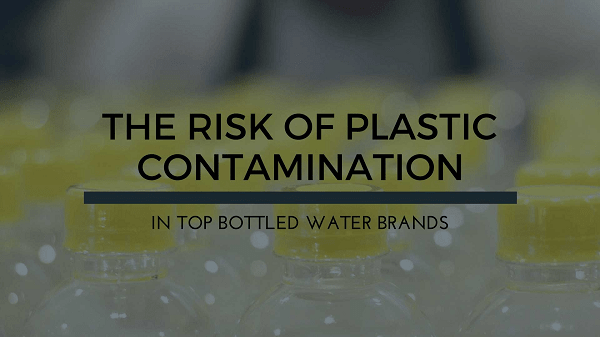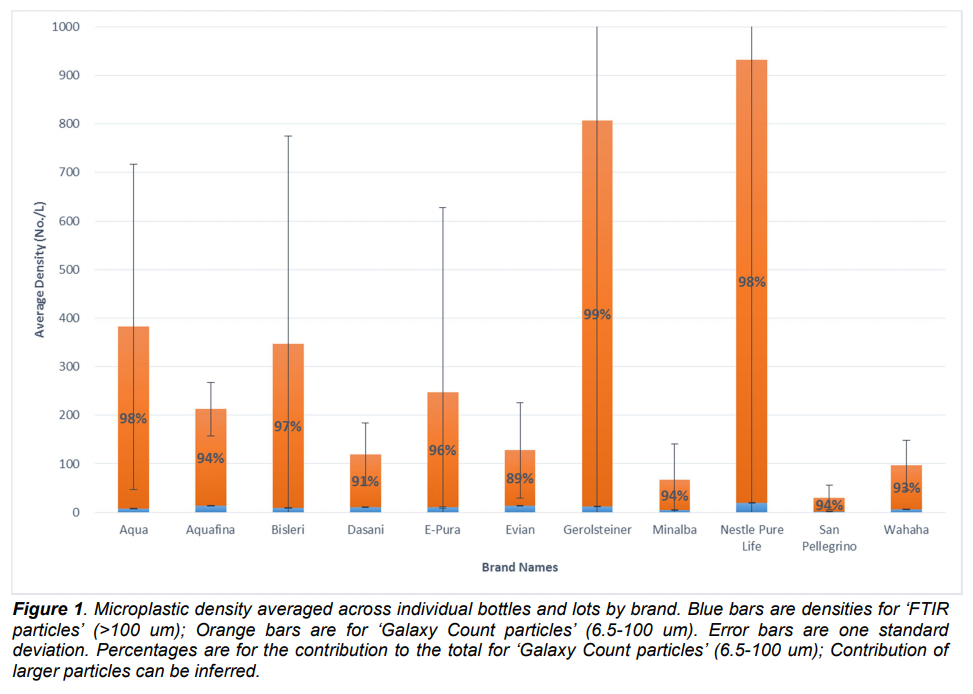Posted by Floralyn Teodoro on Mar 16th 2018
The Risk of Plastic Contamination in Top Bottled Water Brands
Most people are turning to bottled water thinking they’re safer than drinking straight from the tap. However, researchers find that plastic contamination could be twice as high in popular bottled brands as those found in tap water.

Contrary to our belief that bottled water is the safer bet for drinking water when compared to tap water, bottled water now pose health and safety hazards. Current reports and studies prove and show that bottled water isn’t the best choice for safe water.
In a recent major study conducted across nine countries, namely, Brazil, China, India, Indonesia, Kenya, Lebanon, Mexico, Thailand, and the United States, researchers found microplastic particles in bottled water – including top bottled water brands.
This recent study is led by microplastic researcher, Sherri Mason, and published by the State University of New York at Fredonia’s Geology and Environmental Sciences Department. It shows that several top brand name water bottles are contaminated.
Tested in this study are 259 individual bottles from 27 different lots across 11 brands purchased from 19 locations in 9 countries. Leading international bottled water brands included in this study are Aquafina, Dasani, Evian, Nestle Pure Life, and San Pellegrino. Aqua from Indonesia, Bisleri from India, E-Pura from Mexico, Gerolsteiner from Germany, Minalba from Brazil, and Wahaha from China are the leading national brands included as well.
As stated in the published report by Fredonia, the individual bottles were analyzed for microplastic particulate and contamination “using a Nile Red stain which adsorbs to polymeric material and fluoresces under specific wavelengths of incident light.” The results revealed that 93% of the 259 bottles examined showed signs of microplastic contamination.
Found positive to microplastic contamination are leading international bottled water brands Aquafina, Dasani, Evian, Nestle Pure Life, and San Pellegrino; and leading national bottled water brands Aqua, Bisleri, E-Pura, Gerolsteiner, Minalba, and Wahaha.

Source: SUNY Fredonia
The microplastic debris found are Polypropylene (54%), Nylon (16%), Polyethylene (10%), and industrial lubricants used for coating the polymer (4%). Polypropylene, along with Polyethylene, is often used to make plastic bottle caps. The microplastic contamination found in the bottled water samples partially come from their caps or the industrial process of bottling the water itself.
Although experts cautioned that the extent of the health risk posed to humans by microplastics remains unclear, “there are connections between plastic contamination and increases in low sperm count, certain kinds of cancer, and increases in ADHD and autism,” Mason told Agence France Presse (AFP). It’s best to stay careful and vigilant.
You can read the full report from the State University of New York at Fredonia here.

